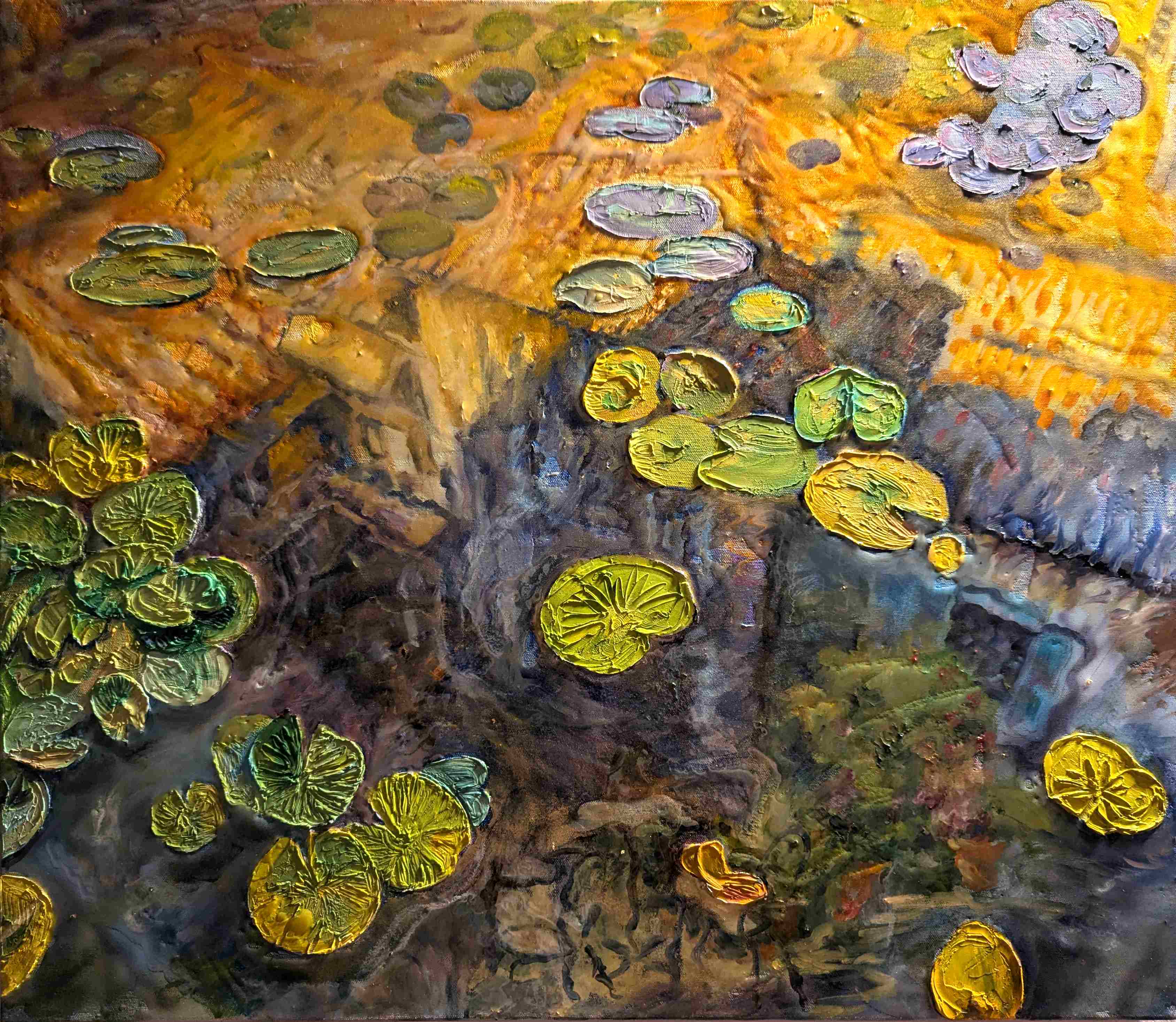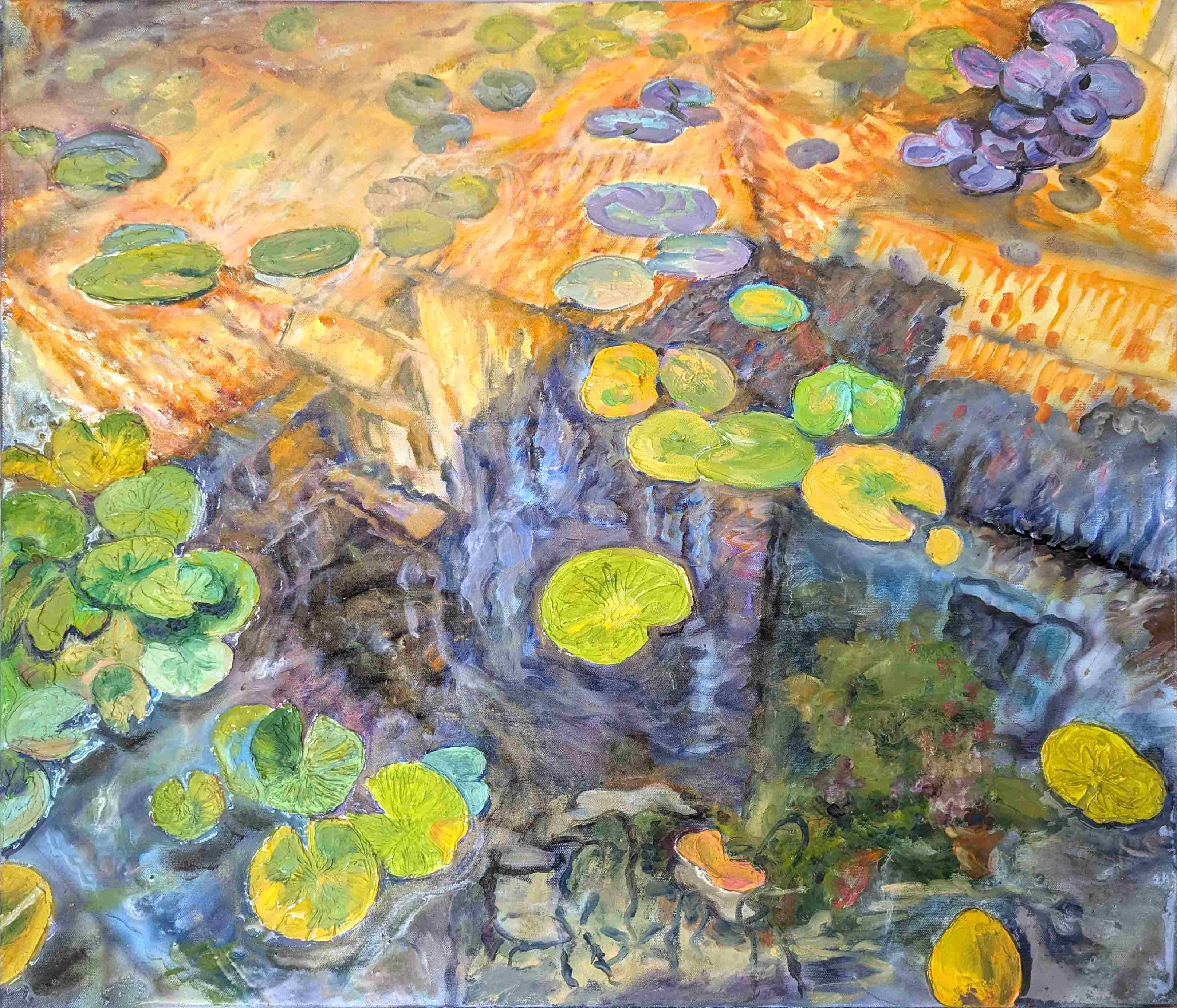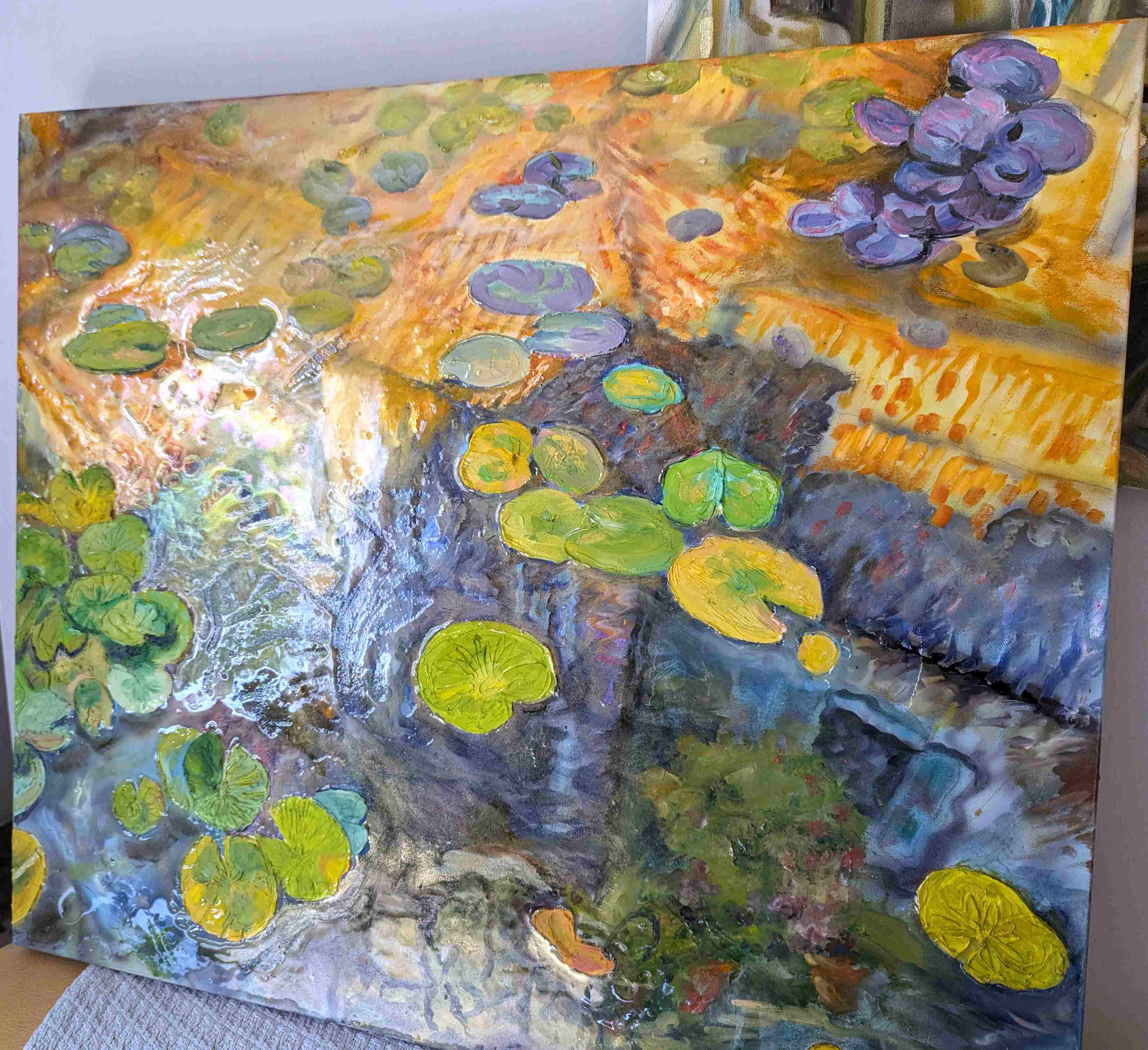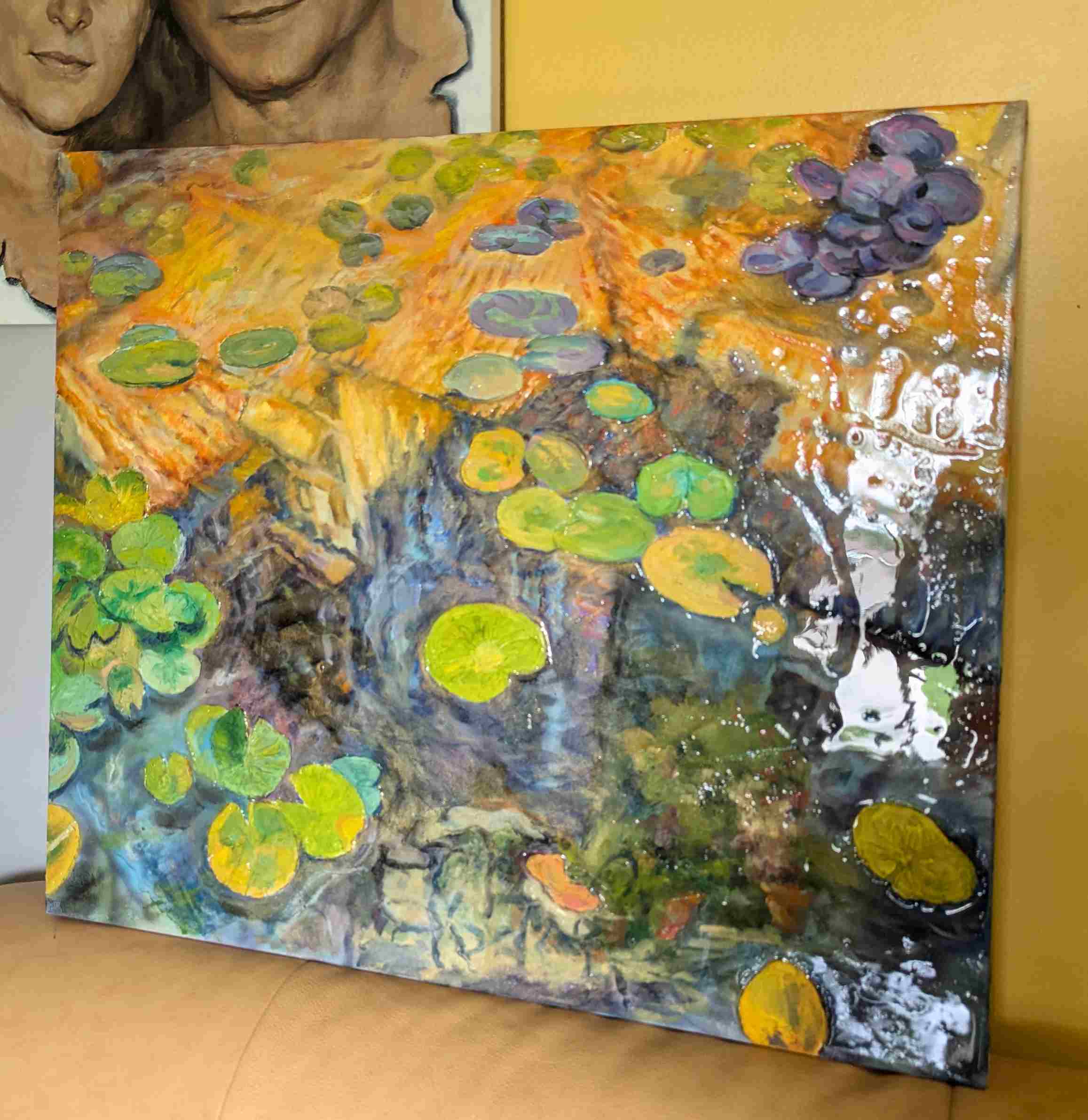Creating Stunning Light Effects with Resin and Modeling Paste: A Case Study of Water Lily Painting
In the world of art, the use of resin and modeling paste has revolutionized the way artists create texture and light effects in their paintings. These materials allow for a dynamic interplay of light and shadow, adding depth and dimension to the artwork. Let’s explore how these techniques are applied, using a beautiful water lily painting as an example.
The Magic of Resin
Resin is a versatile medium that can be used to create a glossy, glass-like finish on paintings. When applied to specific areas, it enhances the luminosity and vibrancy of the colors, making them pop. In the water lily painting, resin is used to highlight the petals and water, creating a reflective surface that mimics the natural sheen of water. This not only adds a realistic touch but also draws the viewer’s eye to these focal points.
Adding Depth with Modeling Paste
Modeling paste is another powerful tool in an artist’s arsenal. It can be applied to the canvas to create raised, textured areas that add a tactile dimension to the painting. In the water lily painting, modeling paste is used to build up the petals and leaves, giving them a three-dimensional appearance. This technique creates shadows and highlights that change with the light, adding to the overall dynamic effect of the piece.
Combining Techniques for Maximum Impact
The combination of resin and modeling paste allows artists to play with light and texture in innovative ways. In the water lily painting, the glossy resin contrasts with the textured modeling paste, creating a captivating interplay of smooth and rough surfaces. This contrast enhances the visual interest and depth of the painting, making it a truly engaging piece.
Conclusion
Using resin and modeling paste in paintings opens up a world of possibilities for artists. These materials allow for the creation of stunning light effects and textures that bring paintings to life. The water lily painting is a perfect example of how these techniques can be used to create a piece that is not only visually striking but also rich in depth and dimension.
Have you tried using resin or modeling paste in your own artwork? I’d love to hear about your experiences and any tips you might have!
Here are the photos of my new water lilies under the different light.
We definitely can paint some like this in our adult art class at Rush In Art Academy, Ann Arbor.





